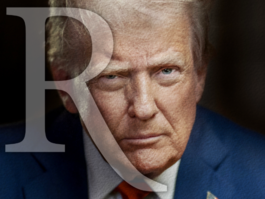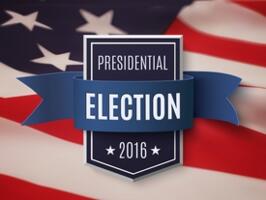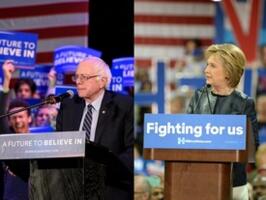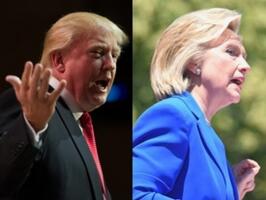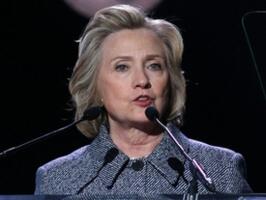Sanders 45%, Trump 41%
Are Democrats on track to nominate the wrong candidate? Hillary Clinton has now fallen behind Donald Trump in a head-to-head matchup, while Vermont Senator Bernie Sanders edges out the presumptive Republican presidential nominee.
A new Rasmussen Reports national telephone and online survey of Likely U.S. Voters finds Sanders picking up 45% of the vote to Trump’s 41%. Eight percent (8%) prefer some other candidate, while five percent (5%) are undecided. (To see survey question wording, click here.)
Our first weekly White House Watch survey released yesterday shows Trump leading Clinton 42% to 37%.
Republicans prefer Trump to Sanders 75% to 16%, while Democrats opt for Sanders 74% to 13%. But Sanders leads Trump 44% to 38% among voters not affiliated with either major party. Against Clinton, Trump is ahead 41% to 28% among unaffiliated voters. While 31% of these voters either prefer some other candidate or are undecided in a Clinton-Trump matchup, only 18% feel that way in a Sanders-Trump race.
(Want a free daily e-mail update? If it's in the news, it's in our polls). Rasmussen Reports updates are also available on Twitter or Facebook.
The survey of 1,000 Likely Voters was conducted on May 17-18, 2016 by Rasmussen Reports. The margin of sampling error is +/- 3 percentage points with a 95% level of confidence. Field work for all Rasmussen Reports surveys is conducted by Pulse Opinion Research, LLC. See methodology.
Just last week, 92% of Democrats said Clinton is still their party’s likely nominee, with 62% who view her nomination as Very Likely. The Vermont senator has vowed to stay in the race until the party’s convention in July, and 37% of Democratic voters said earlier this month that Sanders should stay in the race. Slightly more (39%) think he should quit.
Trump leads Sanders 47% to 39% among male voters, but Sanders leads 51% to 36% among women.
Voters under 40, a key demographic for the Sanders campaign, prefer him to Trump by a better than two-to-one margin - 61% to 28%. Trump leads among older voters.
White voters give Trump a 47% to 40% lead over the longtime senator. Black voters prefer Sanders 67% to 15%, while other minority voters give the edge to Sanders 52% to 34%.
Eighty-five percent (85%) of voters who support Clinton against Trump also back Sanders, while 91% who prefer Trump to Clinton also prefer him against Sanders. Among voters who prefer some other candidate in a Trump-Clinton matchup, just three percent (3%) support Trump; 65% back Sanders, and 30% still want some one else.
In late April, nearly one-in-four voters said they will stay home or vote third party if Clinton and Trump are the major party presidential candidates.
Sanders’ unexpected success in the 2016 presidential campaign has exposed the growing rift between the Democratic party establishment and the party’s more progressive wing. Still, Democratic voters are more likely than voters in general to think their party should identify with Clinton rather than Sanders.
Chaos erupted last weekend at the Nevada state Democratic convention when Sanders supporters lashed out at party leaders for what they saw as a rigged primary election. The national Democratic party has told Sanders to tone down his rhetoric and control his supporters. Sanders, while condemning any violence committed by his supporters, is refusing to end his attacks on Clinton and the party. Rasmussen Reports is surveying voters now about the incident in question and where the Democratic party will go from here. We will release those numbers next week.
In early April, 51% of Democrats said they oppose their party’s use of superdelegates, individuals selected by the party who can support any candidate at the party's convention regardless of who wins their state's popular vote. Sanders and his supporters claim the system has rigged the election for Clinton.
Additional information from this survey and a full demographic breakdown are available to Platinum Members only.
Please sign up for the Rasmussen Reports daily email update (it’s free) or follow us on Twitter or Facebook. Let us keep you up to date with the latest public opinion news.
The survey of 1,000 Likely Voters was conducted on May 17-18, 2016 by Rasmussen Reports. The margin of sampling error is +/- 3 percentage points with a 95% level of confidence. Field work for all Rasmussen Reports surveys is conducted by Pulse Opinion Research, LLC. See methodology.
Rasmussen Reports is a media company specializing in the collection, publication and distribution of public opinion information.
We conduct public opinion polls on a variety of topics to inform our audience on events in the news and other topics of interest. To ensure editorial control and independence, we pay for the polls ourselves and generate revenue through the sale of subscriptions, sponsorships, and advertising. Nightly polling on politics, business and lifestyle topics provides the content to update the Rasmussen Reports web site many times each day. If it's in the news, it's in our polls. Additionally, the data drives a daily update newsletter and various media outlets across the country.
Some information, including the Rasmussen Reports daily Presidential Tracking Poll and commentaries are available for free to the general public. Subscriptions are available for $4.95 a month or 34.95 a year that provide subscribers with exclusive access to more than 20 stories per week on upcoming elections, consumer confidence, and issues that affect us all. For those who are really into the numbers, Platinum Members can review demographic crosstabs and a full history of our data.
To learn more about our methodology, click here.
